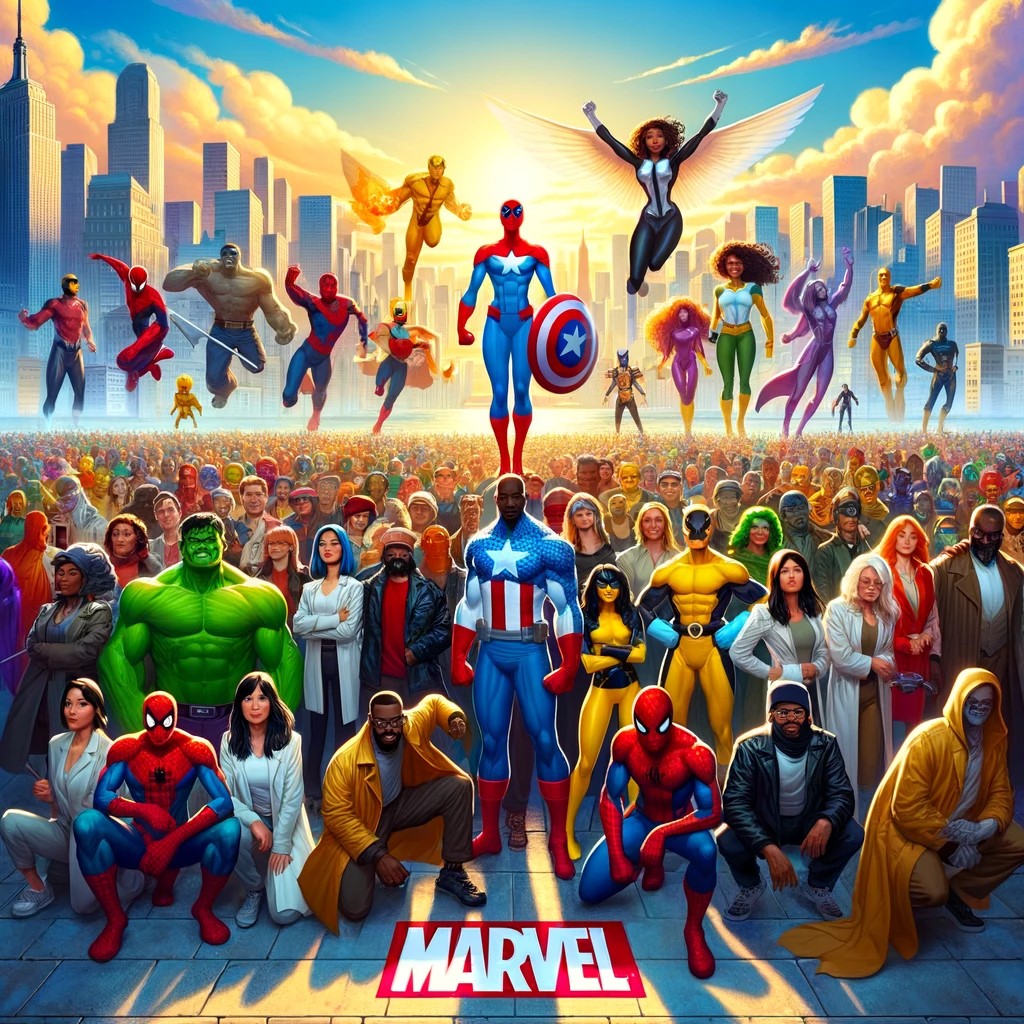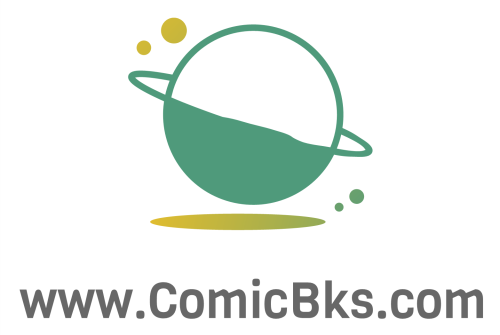
Marvel Comics has been at the forefront of incorporating diversity and inclusion into its storytelling, reflecting societal changes and the increasing demand for representation across various media. This commitment has evolved significantly over the decades, moving from the introduction of minority characters in supporting roles to placing them at the center of their own stories and universes. Here’s an overview of how Marvel has approached diversity and inclusion:
- Early Years and the Silver Age: Initially, Marvel’s roster was predominantly white and male, mirroring the societal norms of the time. However, as the civil rights movement gained momentum in the 1960s, Marvel began to introduce characters of diverse backgrounds. Notable early examples include Black Panther (T’Challa), the first black superhero in mainstream American comics, introduced in 1966, and the X-Men, a team of mutants who, despite their powers, are marginalized and discriminated against by society, serving as an allegory for racial and ethnic minorities, the LGBTQ+ community, and other marginalized groups.
- Bronze Age to Modern Era: Marvel continued to expand its representation through characters such as Luke Cage, the first black superhero to star in his own series; Storm, one of the first black female superheroes; and Northstar, one of the first openly gay characters. These characters and their stories tackled issues such as racism, drug abuse, and homophobia, reflecting Marvel’s commitment to addressing real-world issues through the lens of superhero fiction.
- 21st Century and Beyond: Marvel has significantly increased its efforts in diversity and inclusion, introducing characters from a wide array of backgrounds, sexual orientations, and identities. This includes characters like Kamala Khan (Ms. Marvel), a Pakistani-American teenager and the first Muslim character to headline her own comic book; America Chavez, a Latina and LGBTQ+ character; and Miles Morales, an Afro-Latino teenager who takes up the mantle of Spider-Man. These characters have not only diversified Marvel’s character roster but have also been at the forefront of their storytelling efforts, receiving critical acclaim and resonating with a wide audience.
- Impact and Criticism: Marvel’s push for greater diversity and inclusion has been met with both praise and criticism. While many fans and critics laud Marvel for its efforts to reflect the real world’s diversity and for providing representation to underrepresented groups, others have criticized these moves as tokenism or as pandering to political correctness. Marvel has also faced challenges in balancing representation with maintaining the legacy of its classic characters.
- Future Directions: Marvel continues to evolve its approach to diversity and inclusion, both in its comics and in its cinematic universe. The company has shown a commitment to not only introducing new diverse characters but also to ensuring that these characters are given depth, complexity, and significant roles within the Marvel universe. Additionally, Marvel has made efforts to diversify its creative teams, bringing in writers, artists, and editors from various backgrounds to contribute to its storytelling.
Marvel Comics has long been at the forefront of promoting diversity and inclusion within its vast universe of characters and storylines. This commitment is evident through the creation of characters from various ethnic backgrounds, sexual orientations, and abilities, reflecting the real-world diversity of its readership.
In the early years, Marvel introduced characters such as Black Panther, the first black superhero in mainstream American comics, and the X-Men, a team of mutants who, despite their extraordinary abilities, are often marginalized and persecuted. The X-Men, in particular, have been interpreted as an allegory for various marginalized groups, including the LGBTQ+ community and racial minorities, highlighting issues of prejudice, acceptance, and the fight for equal rights.
Over the years, Marvel has continued to expand its roster of diverse characters. Kamala Khan, a Pakistani American teenager from New Jersey who becomes Ms. Marvel, is one of the most notable additions. Her character deals with the challenges of adolescence, cultural identity, and the responsibility of wielding superpowers, making her relatable to a wide audience and a symbol of empowerment for Muslim readers.
Marvel has also made significant strides in LGBTQ+ representation. Characters like Northstar, one of the first openly gay superheroes, and the introduction of same-sex relationships and marriages in its comics, signal Marvel’s commitment to representing the LGBTQ+ community authentically.
Furthermore, Marvel has been proactive in addressing disability representation. Daredevil, a blind lawyer who fights crime as a masked vigilante, and Professor Xavier, a powerful telepath who uses a wheelchair, are prominent examples. These characters demonstrate that disabilities do not define one’s abilities or potential to be a hero.
The company’s dedication to diversity and inclusion extends beyond its characters to the creators behind the scenes. Marvel actively seeks out and promotes writers, artists, and editors from diverse backgrounds to contribute their voices and perspectives to the storytelling process. This approach enriches the narratives and ensures a variety of viewpoints are represented.
Despite these efforts, Marvel’s journey towards full diversity and inclusion is ongoing. Critics argue that there is still room for improvement, particularly in terms of representation both on the page and behind the scenes. There have been controversies over casting decisions in film adaptations and calls for more significant progress in diversifying the range of characters and stories.
FAQ Section
1. How has Marvel’s approach to diversity and inclusion evolved by 2024? Marvel Comics has made significant strides in diversifying its character roster and creative teams. Recent years have seen the introduction of more characters from a variety of ethnic backgrounds, sexual orientations, and identities, reflecting the real-world diversity of Marvel’s global audience. The company has also focused on bringing in writers, artists, and editors from underrepresented groups to offer authentic voices and perspectives.
2. Can you give examples of diverse characters introduced by Marvel in recent years? In recent years, Marvel has introduced characters like Kamala Khan (Ms. Marvel), a Pakistani-American teenager with shape-shifting abilities; Riri Williams (Ironheart), an African-American teenage genius who takes up the mantle from Iron Man; and America Chavez (Miss America), a Latina LGBTQ+ character with superhuman strength and the ability to punch through dimensions.
3. How is Marvel addressing the representation of women in comics as of 2024? Marvel has made concerted efforts to elevate female characters to lead roles and to launch titles focusing on women superheroes. Characters like Captain Marvel, Black Widow, and Scarlet Witch have seen increased prominence, both in comics and in the Marvel Cinematic Universe. Marvel has also worked to include more women in creative and leadership positions within the company.
4. What initiatives has Marvel taken to promote diversity and inclusion behind the scenes? Marvel has implemented several initiatives aimed at fostering diversity and inclusion behind the scenes, including mentorship programs for emerging creators from diverse backgrounds, collaborations with cultural consultants to ensure respectful and accurate representation, and panels and discussions on diversity at comic book conventions.
5. How does Marvel plan to continue its commitment to diversity and inclusion in the future? Marvel has expressed a long-term commitment to diversity and inclusion through continuous evaluation of its character lineup, storylines, and creative teams. The company aims to introduce more characters from diverse backgrounds, promote stories that address social issues, and ensure that its workforce reflects the diversity of its fanbase.
6. What impact does Marvel’s diversity and inclusion efforts have on its audience? Marvel’s efforts have been met with positive responses from audiences who appreciate seeing themselves and their experiences reflected in superhero narratives. This inclusivity has helped Marvel expand its fanbase, foster a more inclusive comic book community, and inspire the next generation of readers and creators.
7. Are there any upcoming Marvel projects known for their focus on diversity and inclusion? While specific projects are always in development, Marvel continues to prioritize diversity and inclusion in its upcoming titles. This includes new series focusing on underrepresented heroes, anthologies celebrating cultural heritage months, and collaborations with creators from diverse backgrounds to tell new stories within the Marvel Universe.
8. How can fans support diversity and inclusion in comics? Fans can support diversity and inclusion by purchasing comics featuring diverse characters and by creators from underrepresented groups, participating in conversations about representation, and advocating for inclusivity within their communities and online platforms.
As we close the pages of our exploration into Marvel’s dynamic universe, it’s clear that the world of comics is more than just a collection of stories; it’s a mirror reflecting the diversity and inclusivity of the world around us. Marvel’s journey toward a more representative canvas of heroes challenges us to see the hero in everyone, regardless of background, identity, or ability. It’s a powerful reminder that everyone has a story worth telling and a hero within waiting to be unleashed.
But this narrative is far from complete. The quest for diversity and inclusion is an ongoing saga that evolves with every page turned and every new character introduced. It’s a conversation that extends beyond the panels of a comic book, into our lives, communities, and the very fabric of our society.
Now, I turn the page over to you, the reader. Your voice is a crucial part of this ongoing dialogue. How has Marvel’s representation of diversity and inclusion impacted you? Which characters resonate with your story, and what do you hope to see in the future of comics? I invite you to share your thoughts, experiences, and hopes in the comments below. Let’s continue this conversation together, building a world where every hero has a place, and every story is heard. Because in the end, it’s our collective voices that will shape the next chapter in the world of superheroes.
Join the discussion on our website and let’s make our own contribution to the ever-expanding universe of diversity and inclusion. Your comment isn’t just a response; it’s a beacon for change, a call to action for everyone who believes in the power of storytelling to unite, inspire, and transform. Let’s embark on this journey together, because every voice matters, and together, we can create a universe where everyone finds their hero.

